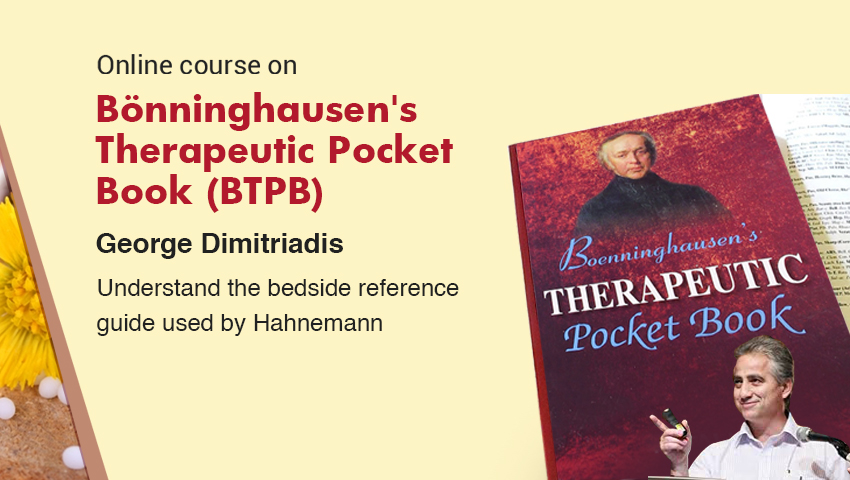Boenninghausen’s Therapeutic pocket book

AROH Approved
Description
Bönninghausen was the first to introduce the repertory of homeopathic materia medica which was called Systematic Alphabetic Repertory of Antipsoric remedies.
Bönninghausen integrated information from 'Repertory of Anti-psoric Medicines', 'Repertory of the Medicines which are not Anti-psoric and 'Attempt at Showing the Relative Kinship of Homoeopathic Medicines' and his vast clinical experiences which lead to Therapeutic Pocketbook in 1846.
Bönninghausen Therapeutic Pocketbook is useful in cases where general symptoms are less, ccases with complete symptoms, characteristic sensation and modalities, concomitants. The theory of grand generalization is the strength of this repertory. Boenninghausen considered sickness as the expression of the whole man, and not of the part which is diseased. Thus all those modalities which are noticed in one part, but missing in any other part can be applied to the person as a whole. Relationships of remedies are available in the last chapter.
It is an invaluable bedside reference used by Master Hahnemann himself, frequently preferred over other works.
This book is the work that paved the way for all the future repertories.
George Dimitriadis, the speaker of this session translated and re-organized Therapeutic Pocket Book in the year 1995. He updated remedy relationships from Boenninghausen and added a glossary of rubric definitions and analyses by him. His efforts rendered the most accurate and reliable repertory which will give you success in practice.
Australian Register of Homeopaths (AROH) accredited for 4 CPD hours for 4 CEU points.
Topics covered:
- History of repertory (tables & indices)
- Bönninghausen
– The First Repertory [TFR (SRA + SRN)]
– indicating certainty (grading within repertory)
– the method basis for all repertoria – except one
– Therapeutisches Taschenbuch [TT]
– symptoms sufficiently defined
– the ‘complete’ symptom triad
– incomplete symptoms – completion by analogy
– Editions & translations (TPi, TPO, TPH, TPL, TPA)
– The Bönninghausen Repertory, 2nd ed., 2010 [TBR2]
– accuracy provides certainty
- Symptomarchy (‘hierarchy’ of symptoms)
– case examples
– multi-morbidity symptomarchy (utilizing concomitants)
– case examples
Learning Objectives
- Understand the bedside reference guide used by Master Hahnemann himself
- Understanding the concept of Complete symptom
- Study of difficult cases from Therapeutic Pocketbook
- Learn the hierarchy of symptoms with clinical cases
- Importance of concomitants in cases
Course Curriculum
Video Lesson
-
Boenninghausen’s Therapeutic Pocket Book by George Dimitriadis
01:38:00
Topic
-
Course Quiz
Student Ratings & Reviews

Instructor






